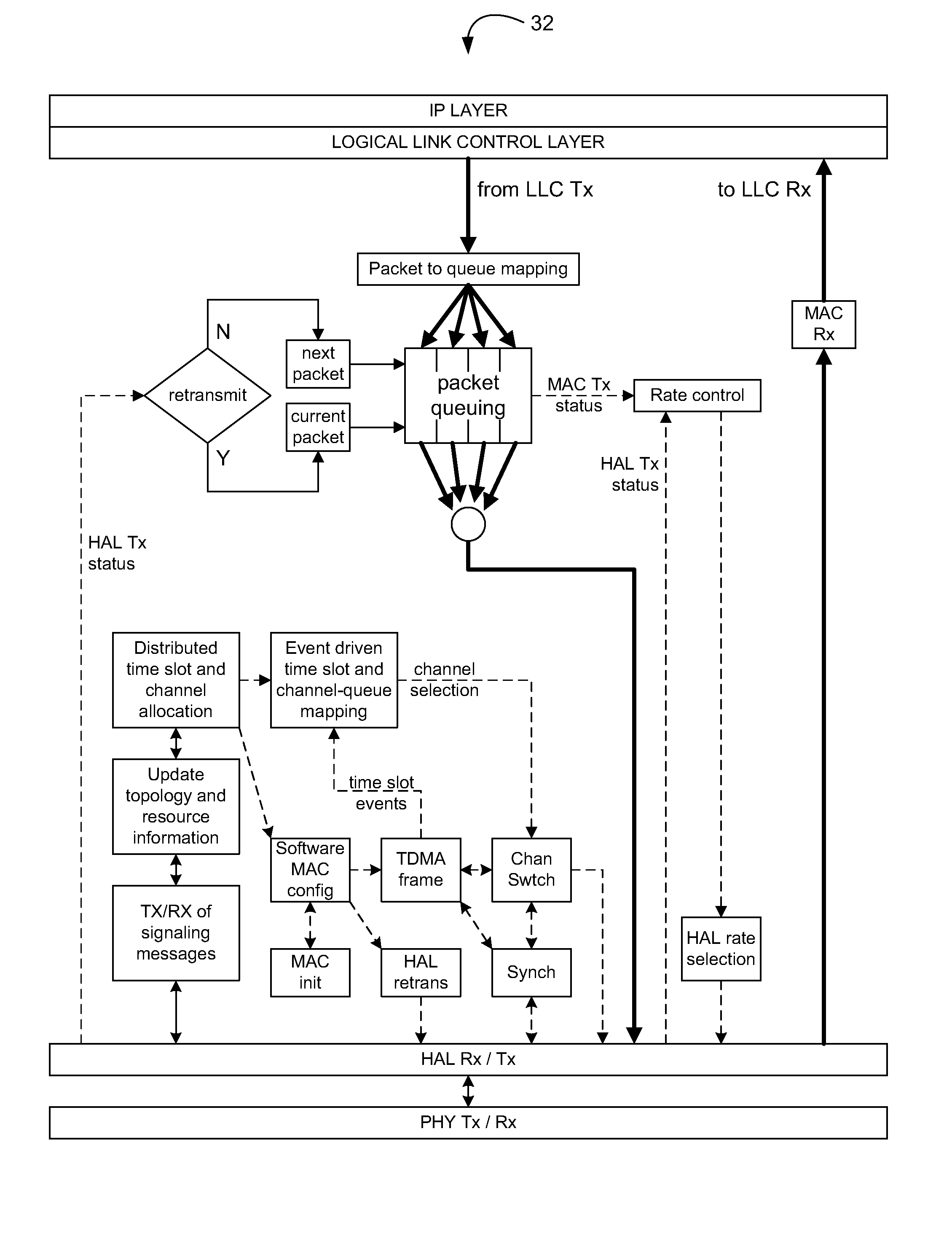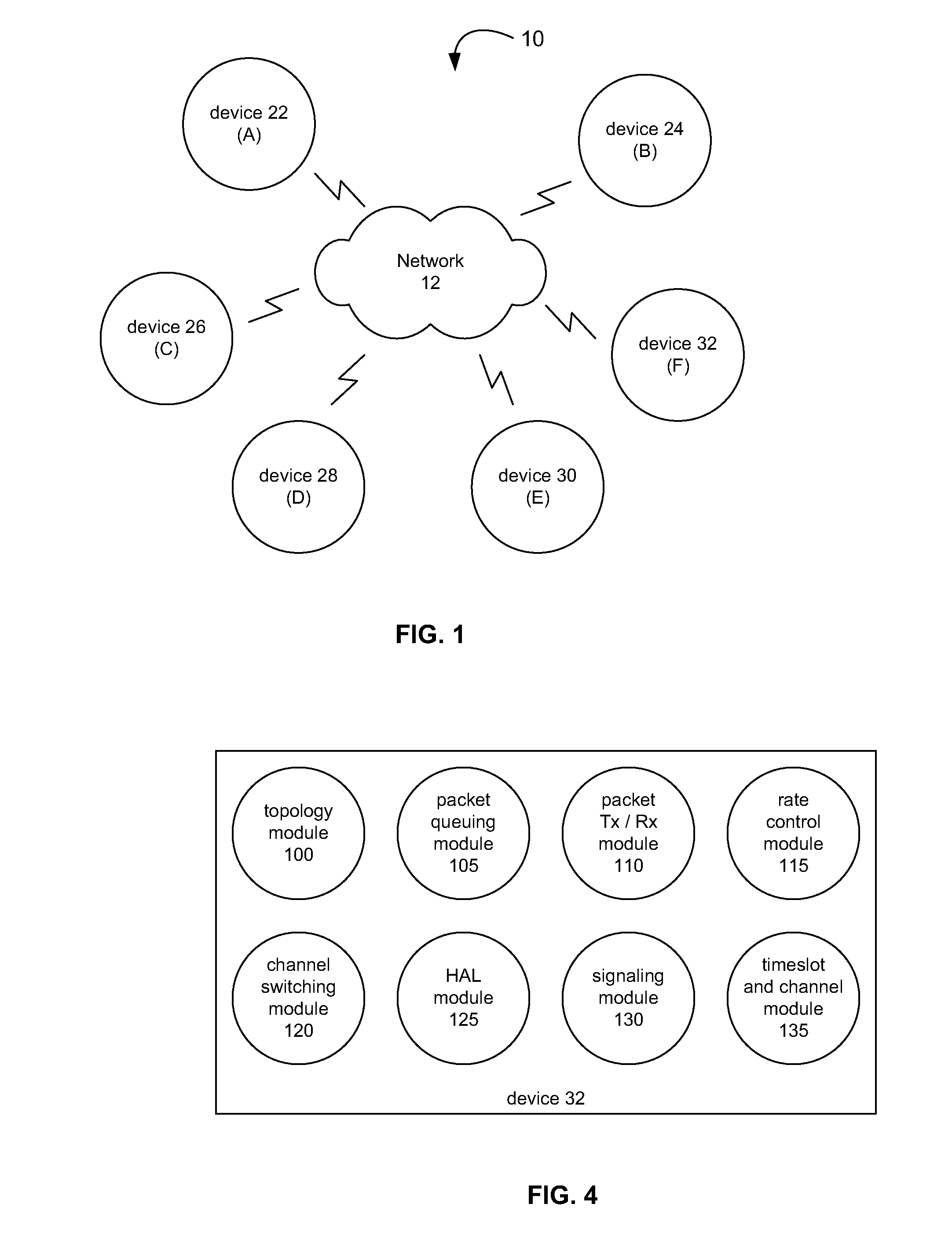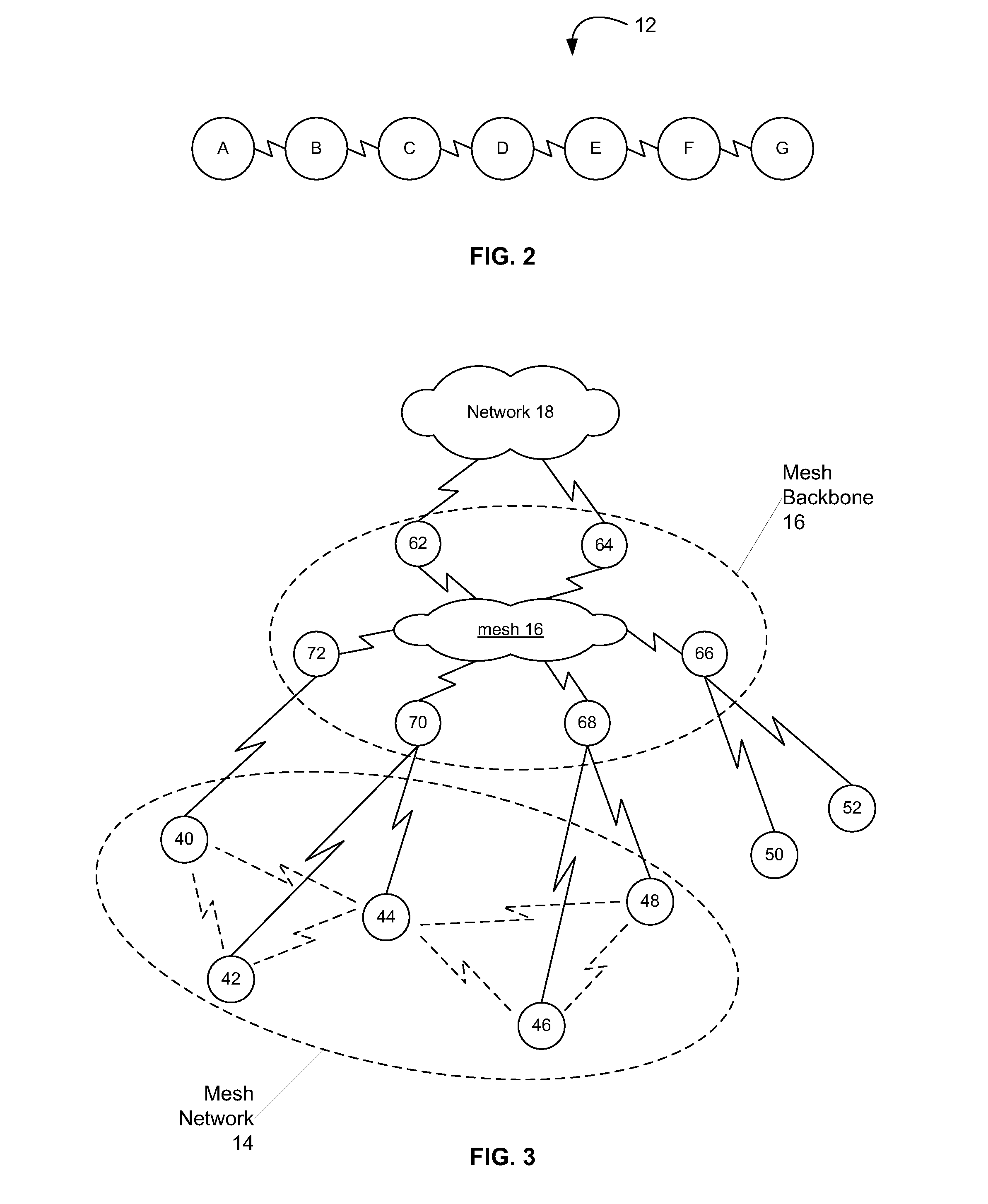Distributed Multichannel Wireless Communication
a wireless communication and multi-channel technology, applied in the field of wireless communications, can solve the problems of tdma communication system burden, unused slots can be very burdensome, centralized controller requirement for conventional tdma is a drawback of tdma for next-generation wireless communications, etc., to achieve maximum flexibility for spikes in throughput, maximize throughput, and maximize throughput
- Summary
- Abstract
- Description
- Claims
- Application Information
AI Technical Summary
Benefits of technology
Problems solved by technology
Method used
Image
Examples
Embodiment Construction
[0032] Certain embodiments disclosed herein provide for systems and methods for distributed TDMA communication between nodes of a wireless communication network. For example, one system as disclosed herein provides an enhanced MAC layer on a network device that is configured to identify its neighboring nodes and create a mapping of communication channels and timeslots for multichannel TDMA communication between the network device and its neighbors.
[0033] After reading this description it will become apparent to one skilled in the art how to implement the invention in various alternative embodiments and alternative applications. To facilitate a direct explanation of the invention, the present description will focus on an embodiment where communication is carried out over an IEEE 802.11 network, although the invention may be applied in alternative networks including 802.15, 802.16, worldwide interoperability for microwave access (“WiMAX”) network, wireless fidelity (“WiFi”) network, ...
PUM
 Login to View More
Login to View More Abstract
Description
Claims
Application Information
 Login to View More
Login to View More - R&D
- Intellectual Property
- Life Sciences
- Materials
- Tech Scout
- Unparalleled Data Quality
- Higher Quality Content
- 60% Fewer Hallucinations
Browse by: Latest US Patents, China's latest patents, Technical Efficacy Thesaurus, Application Domain, Technology Topic, Popular Technical Reports.
© 2025 PatSnap. All rights reserved.Legal|Privacy policy|Modern Slavery Act Transparency Statement|Sitemap|About US| Contact US: help@patsnap.com



